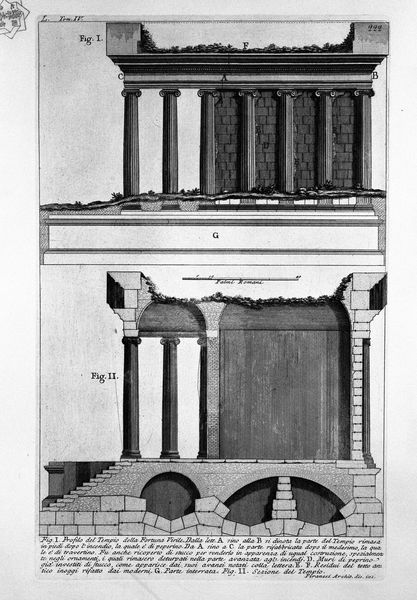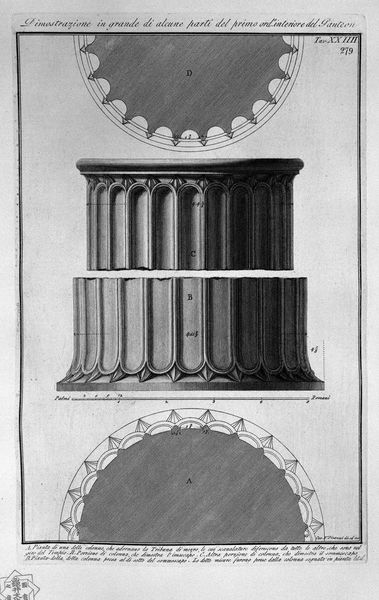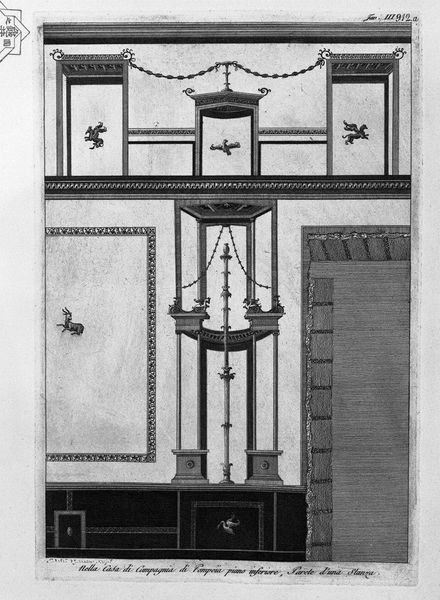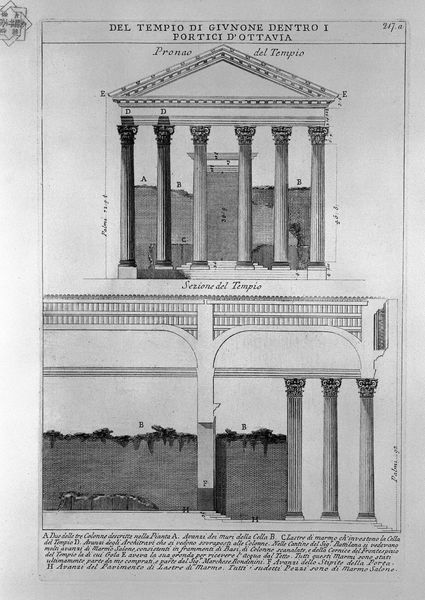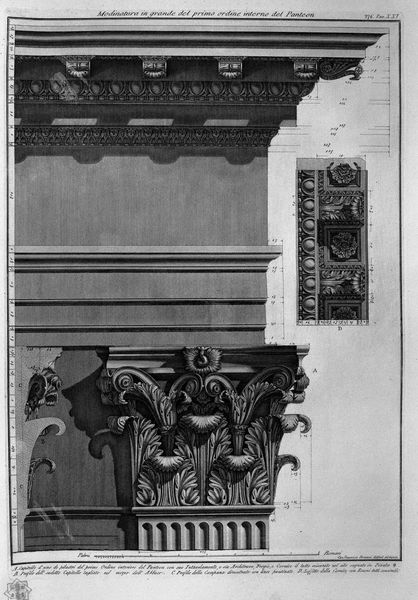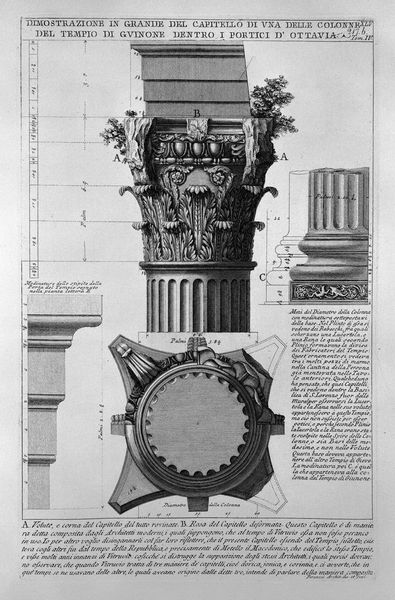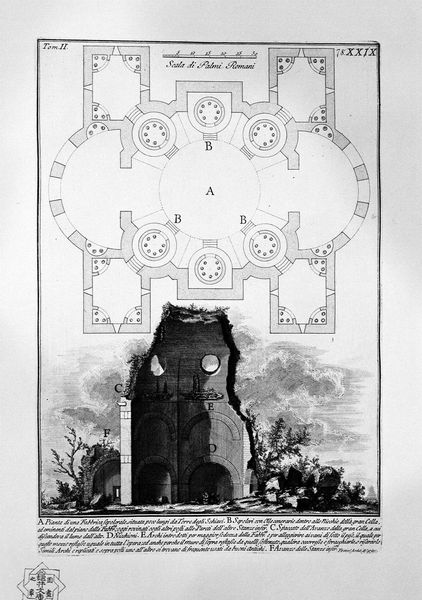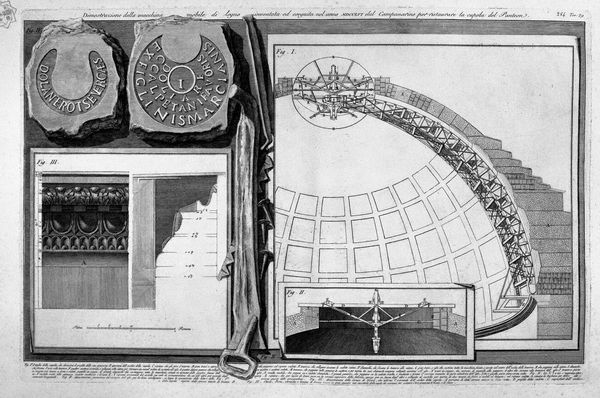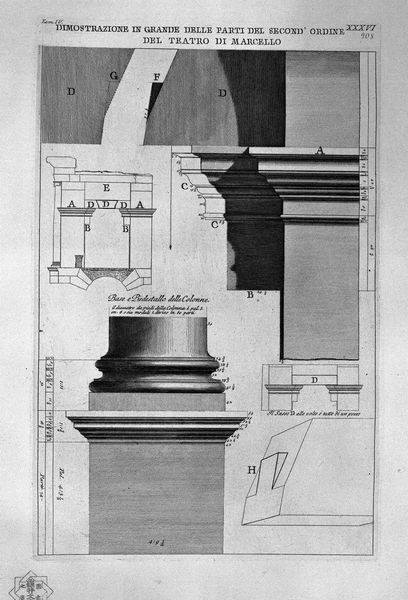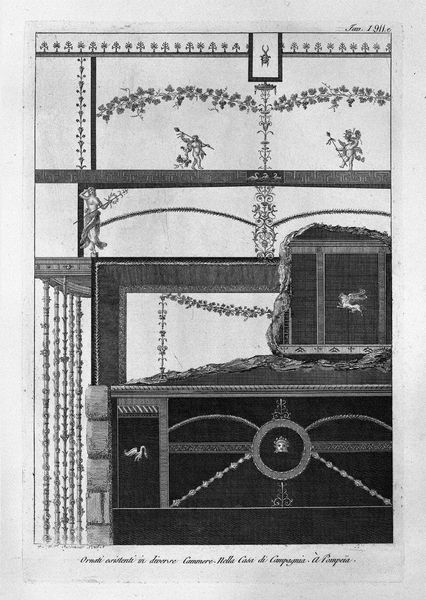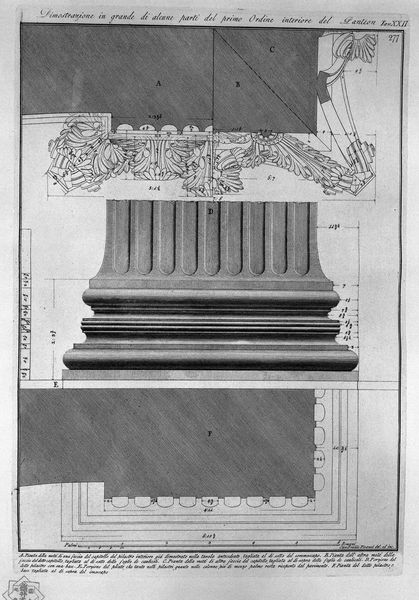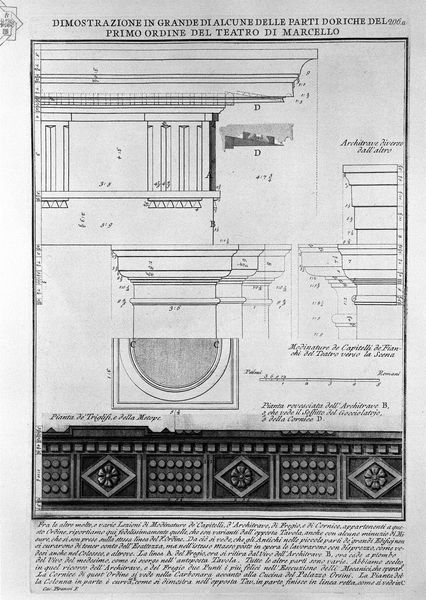
The Roman antiquities, t. 4, Plate LII. Vista in large parts of the Temple of Fortuna Virile.
0:00
0:00
print, engraving, architecture
#
neoclacissism
# print
#
greek-and-roman-art
#
old engraving style
#
classical-realism
#
form
#
geometric
#
classicism
#
line
#
engraving
#
architecture
Copyright: Public domain
Editor: This print, titled "The Roman antiquities, t. 4, Plate LII. Vista in large parts of the Temple of Fortuna Virile," is by Giovanni Battista Piranesi. It's an engraving, and when I look at it, I feel like I'm peering at the very DNA of classical architecture, laid out bare on the page. What captures your attention when you look at this work? Curator: You know, it feels like looking through the eyes of an architect-archaeologist, doesn’t it? Piranesi, ever the romantic, isn’t just documenting, he’s almost conducting a post-mortem, teasing out the spirit of Rome through these meticulous lines. The sheer obsessiveness is quite poetic. Do you see how he elevates even mundane architectural details? It’s almost as if he’s declaring, "Even these small stones hold the soul of an empire!” It makes you wonder, doesn't it, about our own obsession with documentation? Are we burying or unearthing ourselves in the process? Editor: I think I get what you mean! He's not just presenting information; he's presenting a perspective, almost a eulogy. It seems to invite us to feel the weight of history. The amount of precise detail feels like loving attention, a kind of honoring. It makes me wonder about the value he saw in classical architecture to give it such devotion. Curator: Exactly! And consider this: Piranesi was working during the height of the Grand Tour, a moment when the elite flocked to Rome in search of… well, themselves, really, projected onto the ruins. He’s selling them souvenirs, yes, but he’s also selling them a story – a vision of a noble, powerful past that implicitly critiques the present. In a way, each meticulously rendered volute and cornice is a subtle jab at the perceived decadence of 18th-century society. Perhaps this makes us reflect on who defines legacy and for whom they speak. It really feels alive when considering those implications! Editor: I've never thought of it like that before – as a critique hidden within what seems like simple documentation. Thanks! It gives a whole new meaning to the term "art history," because we are dealing with so much more than just art, or just history! Curator: Precisely, and that's the beautiful struggle and charm of it all. It's what makes art such an unending mirror of our humanity.
Comments
No comments
Be the first to comment and join the conversation on the ultimate creative platform.
